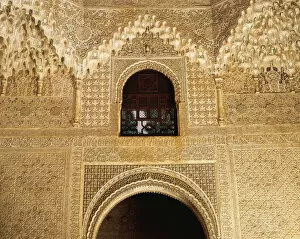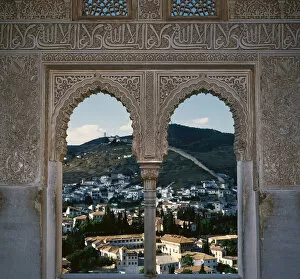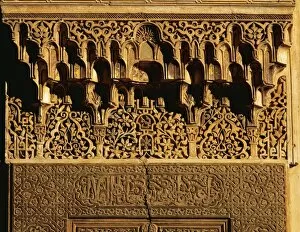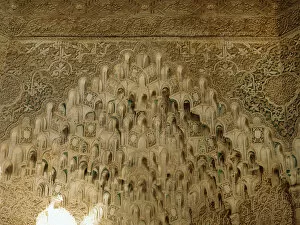Muqarnas Collection
Muqarnas, a mesmerizing architectural feature found in various parts of the world
For sale as Licensed Images
Choose your image, Select your licence and Download the media
Muqarnas, a mesmerizing architectural feature found in various parts of the world, is a testament to the intricate craftsmanship and artistic brilliance of civilizations past. From the clock tower of Bab al-Faraj in Aleppo, Syria to the Hall of the Two Sisters in Granada's Alhambra, muqarnas adorns these structures with its unique geometric patterns. In Bayazid Bastami Shrine Complex located in Bastam District, Iran, muqarnas embellishes the entrance with its honeycomb vaulting. This stunning technique can also be witnessed at Gur-E-Amir Mausoleum in Samarkand, Uzbekistan - a UNESCO World Heritage Site that houses Amir Temir's burial site. The beauty extends beyond architecture; it has inspired art as well. "Ah. Jealous Amongst the Jealous. " by an unknown artist captures this enchanting element on canvas, showcasing its allure and mystique. Continuing our journey through Islamic architecture, we encounter Masjed-e Shah Mosque on Naqsh-e Jahan Square in Isfahan. The facade displays intricate muqarnas designs that leave visitors awe-struck by their complexity and elegance. Even modern spaces pay homage to this ancient craft. The smoking lounge of Vicens House features a roof adorned with Islamic-style muqarnas decoration – a fusion of tradition and contemporary design. Traveling back in time to Baghdad's Abbasid Palace reveals another remarkable example of stalactite vaulted muqarnas from 1977. Its grandeur transports us to an era where every detail was meticulously crafted for aesthetic perfection. Returning once again to Granada's Alhambra complex brings us face-to-face with more breathtaking examples: from the Royal Palace's intricate details to those found within the Hall of Two Sisters - each showcasing different variations and interpretations of this exquisite architectural marvel. Finally, we arrive at the Tekkiye Mosque in Damascus, Syria.










